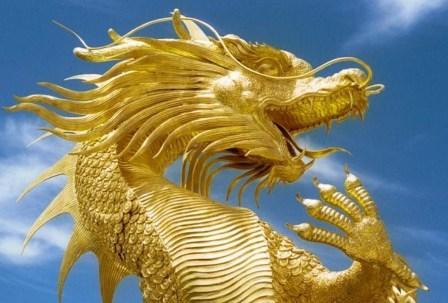
Gold is trading back above $1322 which was a two-year low when hit by April’s gold crash. So is the recovery underway? Maybe, maybe not. We take a quick look at some of the factors currently shaping the price of the shiny yellow metal.
Wednesday’s action – opening higher but ending the day down – “formed a bearish reversal pattern called Key Reversal,” says gold price analysis from fellow London market-maker Societe Generale. “Gold is therefore poised to correct lower to the previous congestion at $1303/1295.”
After new data on Wednesday showed China’s manufacturing activity falling to an 11-month low, the State Council in Beijing last night unveiled what one analyst calls “a mini-stimulus.”
Aiming to “arouse the energy of the market,” the cabinet cut taxes on small business, reduced paper-work for exporters, and invited new investment in railway expansion.
“China’s leaders turned to credit-fueled investment… after export demand faded in the wake of the 2008 financial crisis,” says a Wall Street Journal report, noting that investment’s share of Chinese GDP rose from 42% to 48% in the six years to 2012.
“China’s world-renowned 8 to 12% growth rate is a myth,” writes financial author James Gorrie in London freesheet City AM today, “even as it now slips down towards 7% – China’s hard landing will… unfortunately be our hard landing as well.”
A cross-asset report from Societe Generale sees strong gold price volatility on a China hard landing, perhaps with “a sharp bounce from the initial sell-off if global central banks respond with further QE.”
Looking at US policy, “Recent communication by Fed officials has emphasized that the overall level of monetary accommodation will not be reduced significantly,” says a note from commodities analysts at investment bank Goldman Sachs.
Now forecasting an average gold price of more than $1400 per ounce for 2013 as a whole, the metal will average $1165 next year, the note says – repeating Goldman Sachs’ previous outlook – with a possible drop to $1050 by end-2014.
Dollar gold has so far averaged $1491 per ounce in 2013.
Gold mining companies took advantage of Jan-June’s drop in prices to reduce their hedge book, analysis from Thomson-Reuters GFMS said Thursday.
Building a total forward sale of nearly 3,000 tonnes by 2001, the gold mining industry then “de-hedged” that position as the price rose.
On top of the 11 tonnes bought back in the first 3 months of the 2013, “During the second quarter miners took the opportunity to reduce hedge cover further as the gold price fell sharply,” says the Global Gold Hedge Book Analysis, identifying another 17 tonnes of de-hedging between April and June.
Contrary to recent talk of a return to gold miner hedging by other analysts, “We forecast that producer activity will remain on the side of net de-hedging for the year,” GFMS adds, “despite the sharp fall in price.”



 Follow us on Twitter
Follow us on Twitter Become our facebook fan
Become our facebook fan











Comments are closed.